Creating the Perfect Tabletop Role-Playing Game Scenario
- Tabletop RPGs, Game Design

After having many years of experience running successful tabletop role-playing games with and without relying on prewritten scenarios, I was able to craft a successful formula to generate original, fun and engaging scenarios for the kind of rules-light games with an emphasis on actual role-play that I like and that my players also enjoy, and I will share said formula with you dear readers!
Note that this is just a set of guidelines, and not a strict guide. If you think you have a great idea that doesn't fit my formula, feel free to break this mould and adapt it for your needs!
The following are the steps I follow, more or less in chronological order.
Select a theme and game system
Fantasy? Science-fiction? Mystery? Horror? Action? Comedy? And what sub-genres among those?
With the thousands of different tabletop role-playing games available, chances are that whatever theme your group is interested in that there already is a tabletop role-playing game specifically made for it!
Inversely, existing game systems generally defaults to a specific theme, so you may want to just browse what's available for inspiration!
One thing that I would highly suggest is to avoid trying to modify the rules of an existing game system to fit your needs. Chances are, there is already something better out there that anything you can design by yourself.
Discuss expectations and boundaries
Even though everyone may agree on a game, ensuring that everyone also agrees on the same type of game is just as important, and what boundaries players are comfortable with. While discussion should not be limited to a dedicated session zero, it is a good practice to start with one.
Create player characters
If you're planning a one-session game, you may want to create the player characters by yourself, and if possible give your players the option of choosing which player character they want, with a few extra spares just in case. Otherwise, each player should create their own character with each other and with your approval!
Generally, player characters should be designed to already have some kind of relationship together in order to prevent conflict within the group and ensure its cohesiveness. Putting them in a situation where they are forced to work together can work for a while, but don't count on it to generate a lasting bond.
Define a problem that cannot be ignored
In general, you can't expect to just throw player characters in the middle of an imaginary world, and expect players to be engaged. They need some kind of motivation, and exploration for the same of exploration usually isn't enough. Adding hooks to your game in the hope that your players will bite them is a bit risky since there is no guarantee that will happen, and trying to force your players to do so will not be fun for them.
So instead, I prefer to throw player characters a curveball and put them in a situation they can't ignore. This is what I like to call the problem. Maybe it's a mission they need to accomplish for their organization. Maybe they need to repay a debt. Maybe something is after them. Point is, if they try to ignore the problem, they will have to deal with an even bigger problem in the near future, if they survive at all.
Generally, you should ensure that a problem has at least one solution as a backup. The main exception is for horror scenarios that revolves around how player characters will deal with some tragic inevitability, although even in this case I prefer to keep this kind of story as an outcome for failure instead of a guaranteed outcome.
Lacking inspiration? Just brainstorm at least thirty simple ideas that would fit the theme of the game you want to run, pick three at random, and try to figure out how to connect them. Doing so generally produces a good initial foundation for a cool idea to spawn out of it.
Define major powers connected to the problem
These can be people, creatures, organizations, locations or valuable objects. The point is that these will be the forces that may help or hinder the player characters in their quest.
Personally, I find it helpful to draw an intrigue map - a diagram that keeps track of how each major power is connected to and affects each other, so that I can keep track of how each of them react to specific events behind the scenes, and to easily add new connections during gameplay.
Integrate backstories with the major powers
When a player's backstory meaningfully connects to the events that unfolds in front of them in a way that does not feel forced, it helps them a lot to be invested in the story. Once again, people, creatures, organizations, locations and valuable objects are fair play.
When using an intrigue map, the player characters should be near its center and connect to each other based on their relationships.
Don't prepare beyond the next session
Players are unpredictable. While it's reasonable to prepare assets and likely events to be encountered by player characters within the next session, attempting to prepare beyond that is generally a waste of time.
Introduce the initial situation
Finally, it's time to play! Set up the scene for your players with an emphasis on immersive environmental descriptions. It's the calm before the storm...
This part can also be used to give a tutorial for your players, if some elements of the selected game system may be a bit hard to understand at first.
Throw in the problem as soon as possible
Once the players are in their comfort zone and immersed into the game world, it's time for them to lean into action by slowly or brutally placing them in the path of your planned problem, and let them figure out the course of action they want to take considering it.
Embrace the players' creativity
Earlier, I mentioned that the problem should generally have at least one solution. However, chances are that the collective brain power of players will think about other original potential solutions that you had not considered. When this occurs, don't try to find an excuse as to why that solution won't work and that only yours is the correct one. Instead, just roll with it and reward the players for their creativity by allowing them to move forward and make new discoveries.
Move the goalposts if players hook on a different problem
If there's something that motivates players, it's when they make one up themselves and agree to follow. This may be something related to your original problem, or it may be something completely out of the blue.
It can be hard to accept when players are more interested in pursuing something different than what you originally planned, but if this occurs, it's OK to let your original problem temporarily fade in the shadows and focus on the new story that may unfold. Worst case scenario, you can simply bring your problem back with a vengeance.
Add complications until the halfway point
I try to give my players more and more complications while they pursue the problem up until the halfway point. The rest of the time should naturally be dedicated to them resolving these complications and the problem itself. As long as something isn't explicitly defined in the game world, the game master has full control over its "quantum" state, and I use that to my advantage.
How do you estimate when the halfway point should be? For reference, based on my personal experience, the sweet spot for the play time of a scenario is about 36 hours (specifically 12 sessions of 3 hours), so I consider the halfway point to be around hour 18.
Gradually reveal hidden motivations of major powers
If major events occur without the player characters witnessing them, it may frustrate them that their actions may seemingly have no consequence even though they do, or that some event may seemingly occur out of nowhere even though it didn't. While keeping some mystery is good and while it's OK to leave some loose ends open by the end of a scenario, giving the player characters some exposition as to what's going on behind the scenes through evidence and testimonies is a great way to make them aware that yes, their choices matter and that no, this isn't a thing that you just pulled off out of thin air.
Have an explosive final confrontation
It doesn't have to be a combat encounter, but the final few hours of the game should be something memorable to give the players a sense of satisfaction and completion. This is a way to let them know without directly telling them that yes, they have won... or lost... or caused something beyond their wildest imagination.
Finish with a short epilogue
Now that the player characters have dealt with the problem, what is their short-term future? When potential new stories await them? How did they affect the world around them? Give them some form of closure, either positive or negative depending of the final outcome, and hopefully leave some room open for a potential sequel!
Related content I wrote
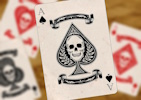
How to Play Liar's Deck (From Liar's Bar) - Full Rules and Variants
- Video Games, Game Design
The following are the rules of the Liar's Deck bluffing card game and its official variants, first introduced in the Liar's Bar video game. These rules are based on its in-game tutorials, observations I made from gameplay sessions, and comments from the game's developers. While there may be a few…
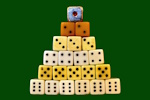
I Designed the Perfect Gambling Game, But...
- Mathematics, Business, Game Design
Back in 2006-07-08, during the 13th Canadian Undergraduate Mathematics Conference at McGill University, I presented a gambling game I designed with the novel property of being both advantageous to players and the house, and that despite this proprety, that pretty much nobody in their right mind…
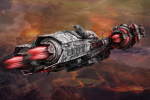
A Universe and World Creation Script for Mongoose Traveller 2nd Edition
- Tabletop RPGs, Programming
The following is a Python script developed by yours truly to generate a sector according to the core rulebook of the Mongoose Traveller 2nd Edition tabletop RPG, exactly as described in the Universe and World Creation chapter. It is designed to describe worlds in human-readable format as much as…
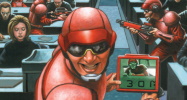
Creating a Paranoia 25th Anniversary Edition Character Sheet for Roll20
- Tabletop RPGs
I'm a big fan of the Paranoia 25th Anniversary Edition comedy tabletop RPG, and I regularly act as a game master for that game on Roll20 with my regular play group in-between other tabletop RPG campaigns. However, there wasn't any good character sheet for that game system on Roll20, so I decided to…
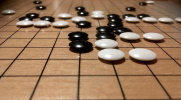
Game Design Analysis - Standardizing Go Rulesets
- Game Design
Go is a popular board game that has been played for thousands of years. However, the rules have not been standardized yet, so while the basic rules are the same worldwide, many rulesets have been developed that are still widely used as of this writing. The current position of the International Go…